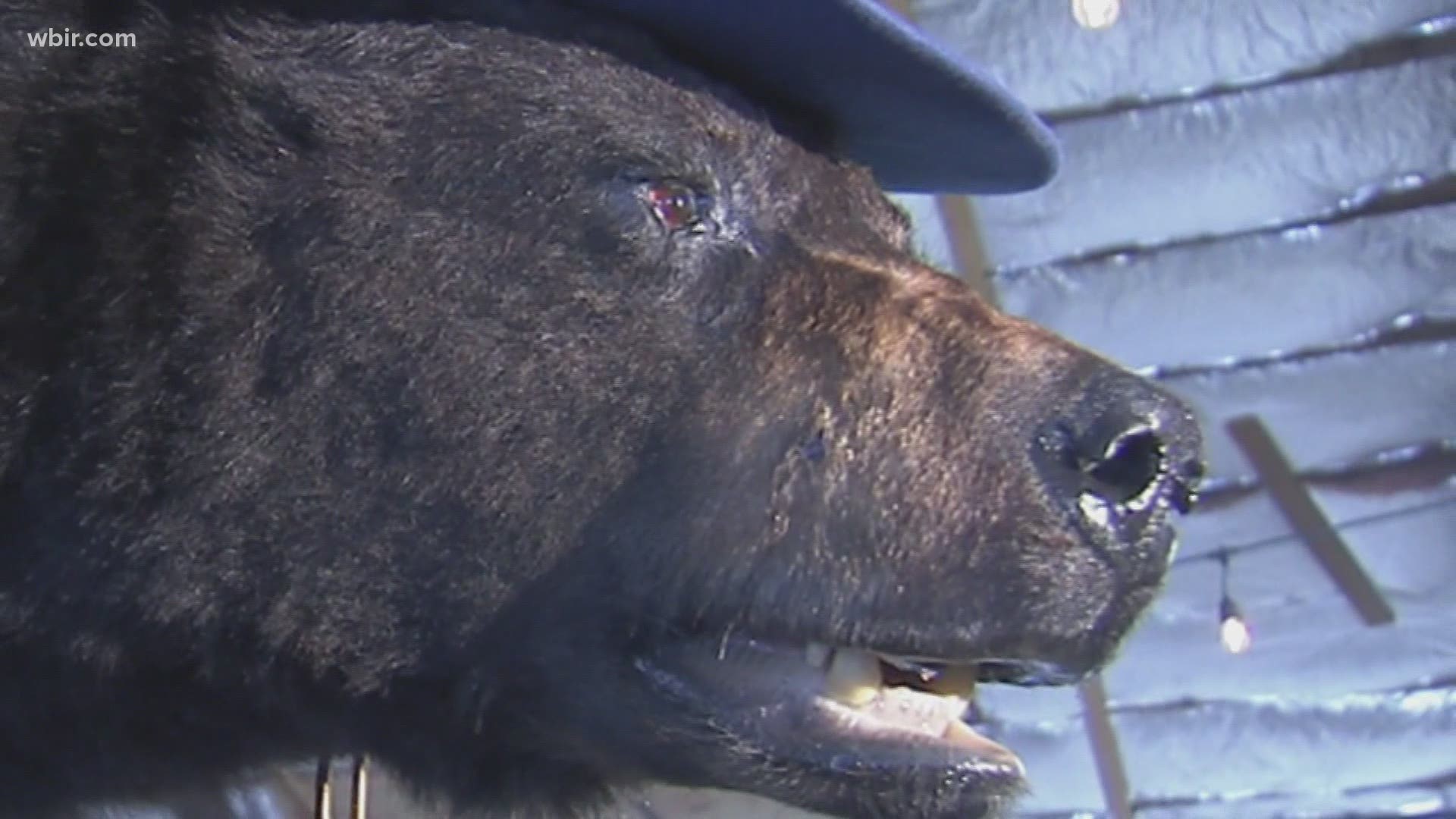KNOXVILLE, Tenn. — Cocaine falling from the sky, a dead parachuter in a Knoxville yard and a black bear killed by a drug overdose—it sounds like the synopsis of a Hollywood film. Sure enough, the 1985 story embedded in Knoxville true crime lore may soon be coming to the big screen.
Variety reports Elizabeth Banks will direct "Cocaine Bear," a feature film based on a nearly unbelievable true story that stretches from Kentucky to South America to the skies over Knoxville and ended with a 175-pound black bear's stomach stuffed with cocaine.
The bear now sits taxidermized and on display as a Lexington, Ky. tourist attraction, but the story of how the animal nicknamed "Pablo Escobear" ended up there first came to light on September 11, 1985 when Fred Meyer spotted a dead body out his South Knoxville window.
"Oh yes, I'm telling you. He was dead," the 85-year-old Meyers told reporters, perhaps stating the obvious given the askew limbs sticking out from under a sheet in his backyard.
Knoxville Police quickly identified the dead man as 40-year-old Andrew Thornton, though the belongings scattered around his failed parachute drew more attention than the soon-to-be-notorious smuggler himself.
Whether strapped to his chest, in a duffle bag or scattered around, the record makes clear that Thornton was carrying 34 kilos of uncut cocaine marked "USA," worth nearly $40 million today. He apparently prepared to defend it: police said he wore a bulletproof vest, carried two guns and extra ammunition.
Police believed he planned to parachute himself and the drugs to safety near South Knoxville's Island Home airport, but crashed into the neighborhood nearby instead.
At the time, a neighbor told reporters he was not surprised by the cocaine smuggler falling from the sky. It was the 1980s, after all!
The dead smuggler
"It was an incident that you wouldn't really forget - because it was something we'd never seen or saw after that," former Knoxville Sheriff JJ Jones said years later. At the time, he worked as an undercover narcotics agent and was called to the scene.
Investigators apparently had no issue identifying Thornton, who worked as a police officer in Lexington before joining a Kentucky-based drug smuggling ring called The Company.
The smugglers were trained pilots and skydivers who fed America's increasing demand for recreational drugs with cocaine from South America.
Thornton planned to parachute into the Island Home airport, but apparently made a mistake and instead became entangled in his parachute before slamming into the ground.
"I mean - it's a perfect plan, and if he hadn't have misjudged, he may still have been doing it today," Jones, the top law enforcement officer in the county where the crime occurred, said. "It was the perfect place for this plan to work."
Before jumping, Thornton set his Cessna to autopilot and authorities later found its wreckage in the mountains of North Carolina.
KnoxNews reports Thornton's karate instructor was also aboard the plane and claimed he was tricked into participating in the smuggling operation. He also parachuted from the aircraft, but survived.
'Pablo Escobear'
Visitors to Lexington's Kentucky for Kentucky store (tagline: "a kick-ass Commonwealth since 1792") may never know the odyssey of its mascot from the mountains of North Georgia to capitalist centerpiece.
Now stuffed and on display, the animal nicknamed "Pablo Escobear" fell unintentionally victim to Thornton's smuggling attempt.
"Shortly after Thornton fell to his death with all the cocaine strapped to his body, a black bear popped up dead in the Chattahoochee forest in Georgia," store co-founder Whit Hyler told WLEX.
Investigators discovered the bear died of a drug overdose. Thornton had apparently thrown 40 plastic containers of cocaine out of the plane before making his ill-fated jump. The animal, in true Miami style, reportedly consumed it all.
If the story wasn't unbelievable before, it is at this point that a caveat must be included. The reports repeated here come from decades-old archive video scripts, perhaps distorted by the white powdery haze of time. Like the morning after a 1985 South Beach party, the story of what happened can only be cobbled together—with the resulting lore taking on the full certitude of fact.
The bear was dead; but its legend had only just begun. After a Georgia Bureau of Investigation-initiated necropsy, the animal was stuffed and sold to country music hall-of-famer Waylon Jennings.
Apparently, the co-founder of country music's Outlaw Movement did not know the details of the nose candy accident that led to the demise of his newly-taxidermized possession. He unwittingly gave it to a friend in Nevada.
When that friend died, the bear traded hands again, this time to a pawn shop where the Kentucky for Kentucky storeowner discovered it.
"They just wanted to get rid of it. They were over it," Hyler told WLEX. No one is disinterested now, he reported: "Just like the bourbon, we have people coming from all over the world just to see this famous cocaine bear."
The animal may never earn back the millions of dollars of cocaine it ate in the Georgia wilderness in September 1985, but it is trying. Kentucky for Kentucky advertises Cocaine Bear hoodies ($38), snow globes ($20) and stuffed animals (notably, unlike its model, stuffed with plush filling, not cocaine. $20).
There is even a "Cocaine Bear for President" pin available ($3.50) though instead of the nation's top office, these days Escobear appears to be gunning for the top of its box office.
The Banks-directed film, inexplicably produced by the filmmakers behind "The Lego Movie," has not been cast or begun filming.
But with a story like this, how could it not make the big screen?

